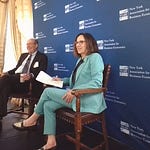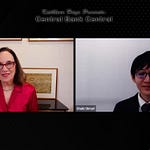Neil Dutta has been in the forefront of Wall Street economists making the case that a loosening labor market and steadily decelerating rate of inflation have been gradually paving the way for the Fed to cut rates this year. As he said in our interview, disinflationary forces are strong enough now that the only question is when they start, and how far and how fast they go.
In fact, he thinks there is more than enough evidence that the Fed could do its first rate cut at its meeting at the end of this month but that it will not make the move yet because officials “want to set the markets up for it.”
Neil says the biggest risk for the Fed is not that it makes the classic mistake of cutting rates too soon only to find out that inflation starts rising again and has to reverse course and hike them. He says the new balance of risks is that it waits too long to back off a policy stance that gets ever restrictive as inflation falls and real rates get higher.
”I think what the unemployment rate moving up historically has meant is that you never have as much time as you think you do, because the fundamental risk with unemployment is that it nonlinear in nature,” he says. “The unemployment rate never goes up just a little bit. It usually goes up not at all, or a lot.”
Agree or disagree, Neil provides a clear, simple, powerful case for the “Fed will cut rates in September” camp, which is clearly what the markets and many economists see now.
As head of the Economics Research, Neil Dutta leads RenMac’s economic research efforts, analyzing global trends and cross market investment themes. Neil joins RenMac after spending seven years at Bank of America-Merrill Lynch, where he was a senior economist with responsibilities for both the United States and Canada.













Share this post